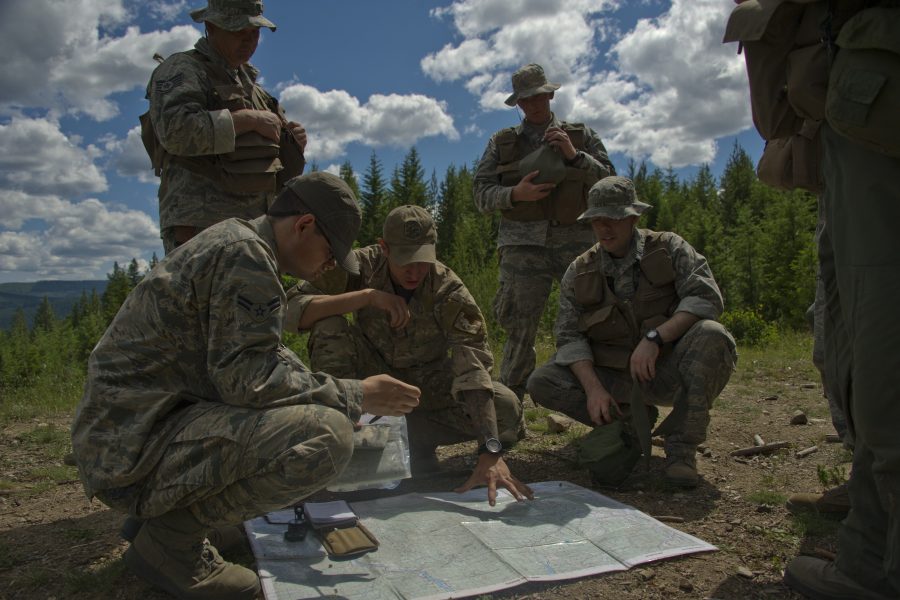Air Education and Training Command is officially moving forward with changes to its survival, evasion, resistance, and escape course, after testing out new approaches in response to the coronavirus pandemic.
The Air Force wants to sharply cut how long all students spend in the program, known as SERE, but especially for those least likely to need the skills it teaches. Officials have been discussing updates to SERE for more than a year.
Air Force Magazine reported in May the service was moving toward splitting SERE training, now 26 days long for all students, into three distinct courses lasting five, 12, or 19 training days. The complexity of each will be tailored to how much knowledge of survival and interrogation resistance a student is likely to need in their line of work.
19th Air Force commander Maj. Gen. Craig D. Wills said in a July 30 interview he expects the changes will free up about 46,000 training days and around $35 million each year. Putting a student through the program costs about $750 per day.
When Wills was a young F-15E backseater in the 1990s, the SERE program for combat aircrews lasted 14 days. It has gradually grown longer and is now required for aircrews in all platforms, meaning everybody from a B-2 bomber pilot to a flight attendant on a VIP aircraft.
“That just doesn’t make sense,” Wills said. “It’s probably not the best use of training resources or Airmen’s time.”
The 336th Training Group at Fairchild AFB, Wash., conducts SERE training. It began experimenting with changes in the spring in response to the coronavirus pandemic, which compelled the school to quarantine arriving students for two weeks before beginning the course. Academic classes throughout the course were consolidated and front-loaded into those weeks to avoid wasting time, and as a result, students completed the program in 19 days instead of 26. That led to more refinements, including starting up distance learning.
While officials initially saw the benefits of freeing up stretched-thin SERE instructors, the changes could help boost new pilot production as well.
The burden of unnecessary SERE training days is especially tough on pilots. Attending SERE can require multiple temporary duty assignments that take a pilot away from flying for months at a time.
“People graduate from pilot training, they go to their formal training unit … they go back to [their undergraduate flying training base] to wait for their SERE date, which is a month or two down the road, they go to SERE, go back [to the flight training base], pack up to move, and then move,” Wills noted. After all that, they haven’t flown their aircraft in two or three months, and that results in additional training that the ops unit has to do because you’re a little rusty.” That’s not an efficient use of resources, he said.
The shorter courses will “keep the pipeline moving” and take Airmen away from crew assignments for less time, Wills said. The desire is to get service members, especially pilots, fully qualified in their weapon system in less than two years. “We think SERE transformation is an important part of that,” he added.
Ultimately, Wills said, the major commands will decide how much SERE class they think their aircrews need. Fighter and bomber pilots will likely get the 19-day course, flight attendants the five-day track, and mobility crews “more than likely in the middle track, about 12 days.” Each MAJCOM will decide which aircrews have a high risk of capture, isolation or exploitation, he said.
SERE involves basic survival techniques in various environments—woodland, desert, Arctic, ocean, and others—as well as evasion in an urban setting, mock capture, and interrogation. Students learn how to stay alive after a crash or being shot down, and what to expect under harsh treatment.
The capture and interrogation portion, described as highly realistic, had been toward the end of the course, but recently was moved forward because students worried about what it would entail instead of focusing on learning important survival skills.
Revamping SERE can be a “win-win across the board,” Wills said, to offer “good initial training, and on top of that, provide more resources to our operational units, so they can stay more ready where it matters, which is at the front line and leading edge.”
